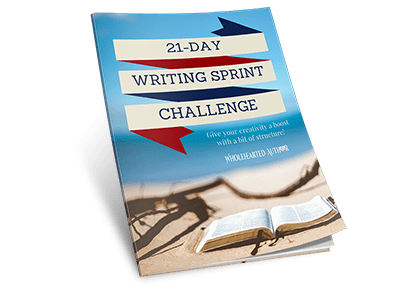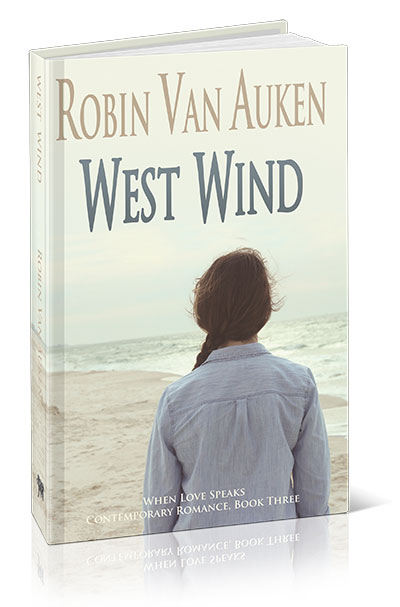Today I chatted with my good friend Tom “Tank” Baird about his passion for archaeology, and how he’s become a local expert on the topic of prehistory and Native American cultures.

I met Tank in 2005 when he rolled up to my dig site in Muncy on his Harley Davidson, with his beautiful, blonde wife, Anita, on the back. The two were clad in black leather, on a loud motorcycle, and just a little intimidating.
I was teaching people, including children, how to excavate at a public archaeology dig in Muncy at the newly formed Heritage Park and Nature Trail. Tank had read about the public dig in the newspaper and was curious. Soon, he muscled the kids out of the way and became my best pupil.
Over the next few months, Tank proved to be the best volunteer a project director could find. His wife, Anita, however, saw a snake at the site and beelined out of there. She would occasionally visit, standing along the road, but her heart wasn’t in it like Tank’s.
TANK BAIRD
Learn more about Tank Baird and his work as an avocational archaeologist with NCC8.
Note: Affiliate links on this website are provided for convenience. See the full disclosure for more info.
During the next few years, I talked Tank into working at the Muncy historic dig, and a few other prehistoric dig sites. He joined Northcentral Chapter 8 of the Society for PA Archaeology at my invitation, and his presence helped our little archaeology chapter come back to life. He became the NCC8 president, and served for several years in that role, before accepting the vice president title when his tenure ended.
He’s introduced a lot of people to archaeology during the past ten years, as he became an avocational archaeologist, himself. He’s self-taught and spends much of his free time reading about prehistoric cultures in the Northeast, visiting museums and archaeology sites, and absorbing everything.
He’s been to places I’ve dreamed of going, but never got around to doing it. That’s the difference between passion and interest. Tank doesn’t wait for an invitation. He seizes opportunities to learn with both hands and relishes everything.
He’s become a local expert in just a few years, because his passion is genuine. He’s made many new friends because of it, including his great pal Joel Buck, another avocational archaeologist. Tank and Joel do a lot of exploring, heading off to American Indian Mounds and museums in other states, reading the same books, even kayaking and fishing together.
I know what he’s going to do when he finally retires: Even more archaeology, more presentations, and maybe write a book about local prehistory. The topic is sparse and we could use a new comprehensive explanation about American Indians along the West Branch of the Susquehanna.
Tank stays busy: He gives Scouts and college groups tours at the local dig site, he goes to public schools to talk to classes, and he is a frequent guests on the rubber-chicken circuit, chatting at the VFWs, the Rotary Clubs, the Masons, the Moose, and more, telling anyone who will listen about local prehistory.
He’s also a frequent guest on Ted Saul’s “Sunday Morning Magazine” talk show on iHeartRadio, speaking about American Indians and significant local historic events.
Tank has many legacies but he’s most proud of the fact that he’s been a part of several PBS documentaries, sharing his stories about American Indians in the West Branch Valley. You can find more about Peoples of the Susquehanna River here.
He’s also proud of the rare, priceless human face effigy he and Anita were able to purchase from a collector, placing it in the local museum, and ensuring it will remain protected and a part of NCC8’s public educational outreach for a long time. You can learn more about this effigy and other projects that keep Tank busy on NCC8’s website: www.PennArchaeology.com.
While you’re on the website site, consider becoming a member and supporting local archaeology. It’s only $20 a year, and who knows, you might become the next Tank Baird.
Books that Tank Baird Recommends
First Pennsylvanians: The Archaeology of Native Americans in Pennsylvania
In First Pennsylvanians, Kurt Carr and Roger Moeller provide a broad, accessible, and wide-ranging overview of the archaeological record of Native Americans in Pennsylvania from early prehistory through the Paleo-Indian, Archaic, Transitional, Woodland, and Contact periods, stretching from 16,500 years ago to 1750 C.E. The authors present and analyze specific traits of each archaeological time period covered and use the archaeological record to provide a glimpse of Native Americans’ daily life in Pennsylvania. First Pennsylvanians also includes personal stories and anecdotes from archaeologists about their experiences in the field as well as a wealth of illustrations and diagrams. The chapters examine the environment, social groups, tools, subsistence, and settlement patterns of Native Americans in Pennsylvania and describe how these factors profoundly affected the populations and cultures of these early inhabitants of the region.
1491: New Revelations of the Americas Before Columbus
Contrary to what so many Americans learn in school, the pre-Columbian Indians were not sparsely settled in a pristine wilderness; rather, there were huge numbers of Paleo-Indians who actively molded and influenced the land around them. The astonishing Aztec capital of Tenochtitlan had running water and immaculately clean streets and was larger than any contemporary European city. Mexican cultures created corn in a specialized breeding process that it has been called man’s first feat of genetic engineering. Indeed, American Indians were not living lightly on the land but were landscaping and manipulating their world in ways that we are only now beginning to understand. Challenging and surprising, this a transformative new look at a rich and fascinating world we only thought we knew.
1493: Uncovering the New World Columbus Created
Presenting the latest research by biologists, anthropologists, archaeologists, and historians, Mann shows how the post-Columbian network of ecological and economic exchange fostered the rise of Europe, devastated imperial China, convulsed Africa, and for two centuries made Mexico City—where Asia, Europe, and the new frontier of the Americas dynamically interacted—the center of the world. In this history, Mann uncovers the germ of today’s fiercest political disputes, from immigration to trade policy to culture wars. In 1493, Mann has again given readers an eye-opening scientific interpretation of our past, unequaled in its authority and fascination
Pennsylvania: A History of the Commonwealth
The Keystone State, so nicknamed because it was geographically situated in the middle of the thirteen original colonies and played a crucial role in the founding of the United States, has remained at the heart of American history. Created partly as a safe haven for people from all walks of life, Pennsylvania is today the home of diverse cultures, religions, ethnic groups, social classes, and occupations. Many ideas, institutions, and interests that were first formed or tested in Pennsylvania spread across America and beyond, and continue to inform American culture, society, and politics. This book tells that story—and more. It recenters Pennsylvania in the American historical narrative.
Pennsylvania: A History of the Commonwealth offers fresh perspectives on the Keystone State from an array of distinguished scholars who view the history of this Commonwealth critically and honestly, using the latest and best scholarship to give a modern account of Pennsylvania’s past. They do so by emphasizing the evolution of Pennsylvania as a place and an idea. The book, the first comprehensive history of Pennsylvania in almost three decades, sets the Pennsylvania story in the larger context of national social, cultural, economic, and political development. Without sacrificing treatment of the influential leaders who made Pennsylvania history, the book focuses especially on the lives of everyday people over the centuries. It also magnifies historical events by examining the experiences of local communities throughout the state.
Pennsylvania: A History of the Commonwealth is divided into two parts. Part I offers a narrative history of the Commonwealth, paying special attention to the peopling process (the movement of people into, around, and out from the state); the ways people defined and defended communities; the forms of economic production; the means of transportation and communication; the character, content, and consequences of people’s values; and the political cultures that emerged from the kinds of society, economy, and culture each period formed and sustained. Part II offers a series of “Ways to Pennsylvania’s Past”—nine concise guides designed to enable readers to discover Pennsylvania’s heritage for themselves. Geography, architecture, archaeology, folklore and folklife, genealogy, photography, art, oral history, and literature are all discussed as methods of uncovering and understanding the past. Each chapter is especially attuned to Pennsylvania’s place in the larger American context, and a Foreword, Introduction, and Epilogue to Part I explore general themes throughout the state’s history. An important feature of the book is the large selection of illustrations—more than 400 prints, maps, photographs, and paintings carefully chosen from repositories across the state and beyond, to show how Pennsylvanians have lived, worked, and played through the centuries. This book is the result of a unique collaboration between Penn State Press and the Pennsylvania Historical and Museum Commission (PHMC), the official history agency of the Commonwealth of Pennsylvania. Together they gathered scholars from all over the Commonwealth to envision a new history of the Keystone State and commit their resources to make imagining and writing a new history possible.

This page might contain affiliate links. In the event of a sale, I will be awarded a small commission (at no extra cost for you). See the full disclosure for more info. Thank you for your support!

This work is licensed under a Creative Commons Attribution-NoDerivatives 4.0 International License.
Ready for a Challenge?
Have even more fun when you accept the 21-Day Writing Sprint Challenge. This process is one I use every semester with my college students, so I know it can kickstart your creativity and introduce structure to your writing schedule. When you join my Circle of Writers & Authors, you’ll receive FREE writing resources, and you’ll sign up for my newsletter. I will not sell your information, or spam you. I will send you updates about new articles and podcasts I’ve created, and projects I’m working on. You can unsubscribe at anytime. Read my Privacy Policy here.
Wholehearted Author is for you if you are …
- Starting out as a writer and could use some guidance
- Wanting to be inspired to create and publish your book
- Looking for like-minded, happy people and helpful mentors
- Hoping to turn your writing into a full-time, awesome career
- New to the concept of “permission marketing” but willing to try
CATCH THE WEST WIND
Add WEST WIND to your library!
If you love a good mystery, a romantic whodunit that will surprise you, then WEST WIND is a great addition to your ebook library.
West Wind is my third novel as an author of Contemporary Fiction, Suspense, Thriller, and Romance. It’s FREE too, when you join my exclusive Readers Group. Join today and download your free book, and as a special thank you, you’ll receive a SECOND FREE BOOK tomorrow! The giving goes on and on when you become my fan.
When you join my Readers Group, you’ll receive updates about new projects I’m working on. You can unsubscribe at anytime. Read my Privacy Policy here.






